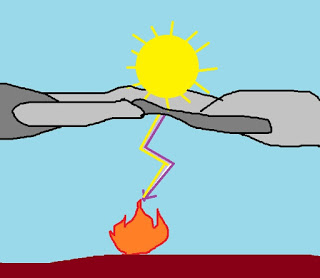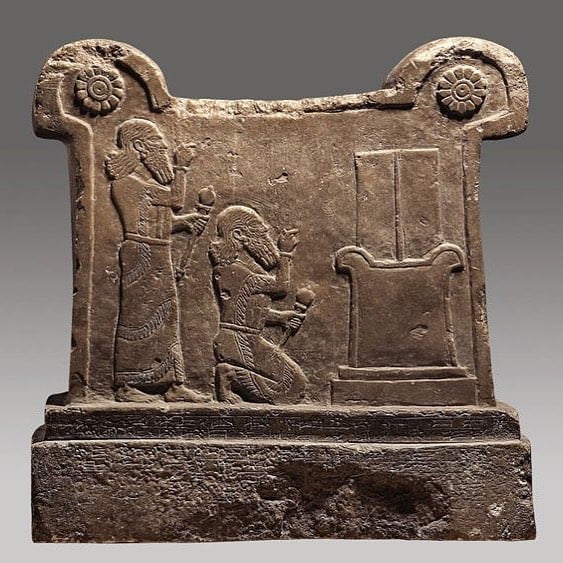Thread: Something quick between two football games 🙂 "Hestia, you who tend the holy house of the lord Apollo...come now into this house...having one mind with Zeus the all-wise..." Homeric Hymn To Hestia (perseus.tufts.edu/hopper/text?do…)
What does this mean?
What does this mean?

Maybe the same thing as this: In Hindu mythology, Agni (fire) was believed to have three manifestations: Sun, Lightning, Fire...Which is why he had three heads... 

Just like Slavic Triglav (Three headed)..."Because it is a great secret how Svarog (heavenly and earthly fire) is at the same time Perun (thunder) and Svetovid (Sun)"...
oldeuropeanculture.blogspot.com/2014/07/trigla…
oldeuropeanculture.blogspot.com/2021/04/lugus-…
oldeuropeanculture.blogspot.com/2014/07/trigla…
oldeuropeanculture.blogspot.com/2021/04/lugus-…

Interesting right? Cause before people learned how to make fire, fire descended from the sun through lightning...
By the way, modern science seem to confirm that it is indeed Sun (Surya) which gives power to Indra (lightning)
which becomes Agni (fire) oldeuropeanculture.blogspot.com/2017/06/sun-th…
By the way, modern science seem to confirm that it is indeed Sun (Surya) which gives power to Indra (lightning)
which becomes Agni (fire) oldeuropeanculture.blogspot.com/2017/06/sun-th…

Basically, sun gives birth to fire...Which is why Surya, the sun god, had a daughter, Tapati, whose name literally means "warming", "the hot one", "burning one"...Who was apparently the same as Scythian Tabiti...And Herodotus claimed that Tabiti was the same as Hestia...
And it is because the hearth fire is the same fire burning inside of the sun, that people make sure the hearth fire burns through the winter solstice (Christmas) night, the longest night, "so the sun's fire doesn't get extinguished"
oldeuropeanculture.blogspot.com/2019/01/badnja…
oldeuropeanculture.blogspot.com/2019/12/la-buc…
oldeuropeanculture.blogspot.com/2019/01/badnja…
oldeuropeanculture.blogspot.com/2019/12/la-buc…

This fire which descended from the sky, was imagined as a firebird which came down from the sky to earth to nest. It had to be found, caught and brought home...Hence legends about "the hunt for the firebird whose one feather can light up the whole room"...
oldeuropeanculture.blogspot.com/2020/11/firebi…
oldeuropeanculture.blogspot.com/2020/11/firebi…

How old are these legends? Well they most likely predate the moment when "Prometheus stole the fire from the gods" (thunder god to be more precise)...
oldeuropeanculture.blogspot.com/2020/10/promet…
oldeuropeanculture.blogspot.com/2020/10/promet…

Or, before people accidentally discovered fire making while drilling... oldeuropeanculture.blogspot.com/2020/11/drill.… 







Offside... 🙂 And how long ago did people become masters of fire, considering that "fire-drill" was still worshiped as deity in Mesopotamia
oldeuropeanculture.blogspot.com/2021/03/holy-f…
oldeuropeanculture.blogspot.com/2021/03/holy-f…

How long ago did people become masters of fire, considering that fire making or fire stealing or fire catching was still the stuff of legends during classical times?
How long ago did people become masters of fire, considering that hearth was the center of the house cult, the house altar in so many Eurasian cultures? Like among the Serbs...
oldeuropeanculture.blogspot.com/2019/12/bride-… oldeuropeanculture.blogspot.com/2019/12/verige…
oldeuropeanculture.blogspot.com/2019/12/bride-… oldeuropeanculture.blogspot.com/2019/12/verige…
And considering that making sure that hearth fire never died was so important to Eurasian people until very recently? Like Serbs:
oldeuropeanculture.blogspot.com/2019/12/fire-g…
oldeuropeanculture.blogspot.com/2019/12/fire-g…
And considering that rekindling new fire was one of the most important annual ceremonies all over Eurasia until recently...Like in Slovenia for instance:
oldeuropeanculture.blogspot.com/2020/07/blesse…
oldeuropeanculture.blogspot.com/2020/07/blesse…
BTW, Hestia, (the etymology unknown, believed to be Pre-Greek) has only one cognate, Slavic word jesteja (yesteya) meaning "hearth, paved area around or in front of a hearth used for cooking food" which comes from "jesti" (yestee) meaning to eat.
oldeuropeanculture.blogspot.com/2015/08/jestij…
oldeuropeanculture.blogspot.com/2015/08/jestij…
Which would make Jesteja (Yesteya) the place where food was cooked...Which is exactly what hestia was...Not any fire...Domestic fire...The fire where food was cooked...
Ok off to watch the game. Take care.
• • •
Missing some Tweet in this thread? You can try to
force a refresh























